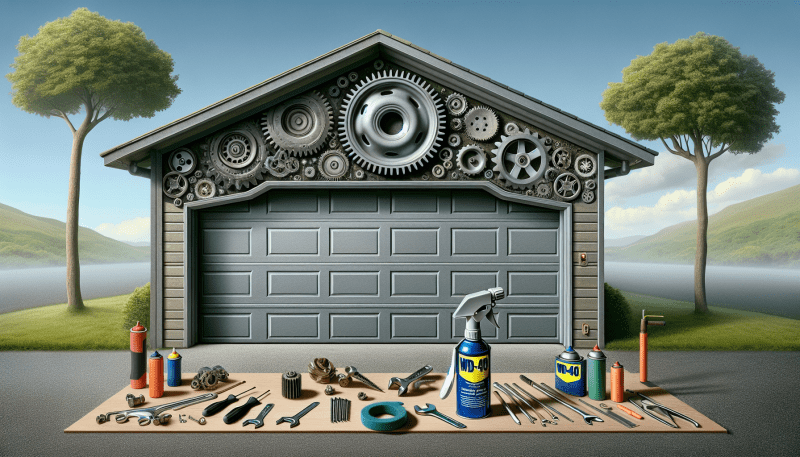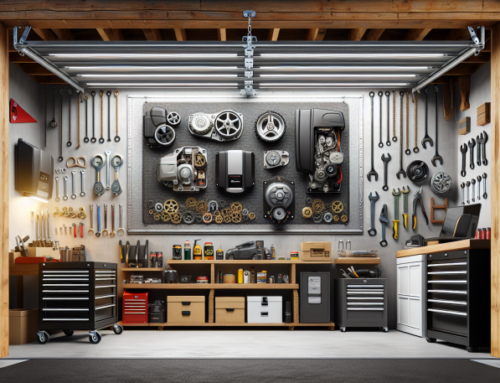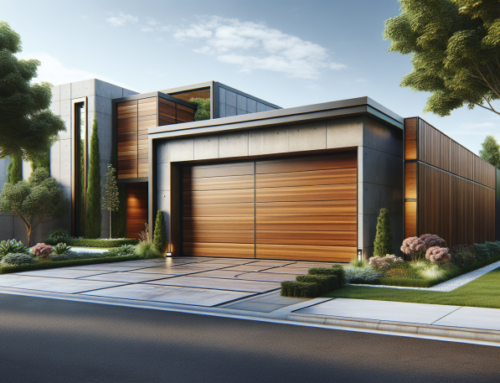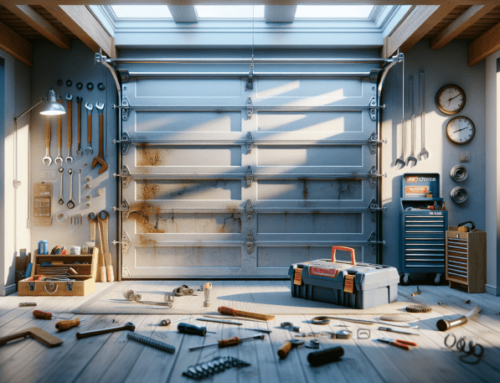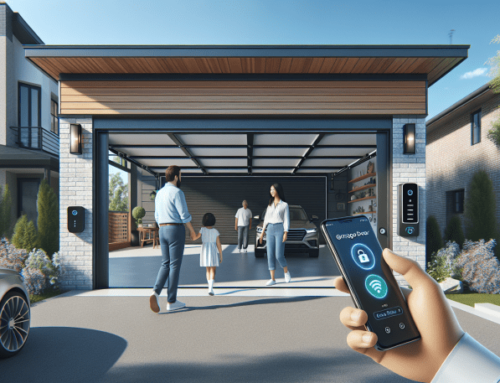How to Extend the Life of Your Garage Door is a crucial topic for homeowners and businesses alike. At Garage Door Pros, we excel in providing swift, affordable garage door solutions across South Florida, including Pembroke Pines, Fort Lauderdale, and beyond. Are you tired of frequent garage door repairs and looking for ways to prolong its lifespan? Our expert tips will help you maintain your garage door efficiently, saving you time and money.
Regular maintenance is the key to extending the life of your garage door. Simple actions like lubricating moving parts, tightening hardware, and checking the balance can make a significant difference. Additionally, addressing minor issues promptly can prevent costly repairs down the line. This article will guide you through essential maintenance practices and professional services that can keep your garage door in top condition.
But these are just the basics. To dive deeper into expert advice and practical tips, let’s explore the comprehensive guide on how to extend the life of your garage door. With insights from industry professionals and real-life examples, you’ll gain valuable knowledge to keep your garage door functioning smoothly for years to come. So, without further ado, let’s get started!
Understanding the Importance of Garage Door Maintenance
Regular maintenance is essential for extending the life of your garage door. Without it, you risk facing significant costs and inconveniences. Neglecting upkeep can lead to expensive repairs or even the need for a complete replacement. For instance, a broken spring can disrupt your daily routine and require immediate attention. According to industry experts, regular maintenance can reduce repair costs by up to 30%. Case studies show that homeowners who schedule annual inspections experience fewer breakdowns. This proactive approach ensures that minor issues are addressed before they become major problems. For more information on services, visit our service page. Additionally, understanding the types of garage doors available can help you make informed decisions. Check out our detailed guide on types of garage doors. If you have any questions, feel free to contact us.
Identifying Common Garage Door Problems
Broken springs, misaligned tracks, and worn-out rollers are common garage door problems. Broken springs can cause the door to become heavy and difficult to lift. You might hear a loud bang when a spring breaks. Misaligned tracks often result in the door not opening or closing smoothly. Look for gaps between the rollers and the rail or listen for grinding noises. Worn-out rollers can make the door noisy and jerky. Inspect the rollers for signs of wear or damage.
Early identification of these issues can save you from costly repairs. Regularly check for any unusual sounds or movements. If you notice any of these symptoms, it’s time to seek professional help. For more information on services, visit our service page. To understand the cost implications, check out our cost to repair my garage door springs section. For further assistance, feel free to contact us.
Regular Inspection and Lubrication
To ensure your garage door operates smoothly, start with a visual inspection. Look for signs of wear and tear on springs, cables, rollers, and tracks. Use a flashlight to check for rust or fraying. Next, test the door balance by disconnecting the opener and manually lifting the door halfway. If it stays in place, the balance is correct. If not, it may need adjustment.
Gather tools like a wrench, pliers, and a lubricant spray. Lubricate moving parts such as hinges, rollers, and springs. Avoid greasing the tracks; instead, clean them with a damp cloth. Lubrication reduces friction and prevents wear, extending the door’s life.
Inspect your garage door every three months. Lubricate moving parts every six months. Regular maintenance can prevent costly repairs. For more detailed guidance, visit our blog or check our FAQ section. If you need professional help, our service team is ready to assist.
Tightening and Adjusting Hardware
Regularly checking and tightening all bolts and screws is essential for maintaining your garage door. Begin by inspecting each bolt and screw, ensuring they are secure. Use a wrench to tighten any loose hardware, but avoid over-tightening, which can cause damage. Next, adjust the garage door opener settings. Refer to the manufacturer’s manual for guidance on optimal performance settings. Typically, this involves adjusting the force and limit settings to ensure smooth operation.
Safety is paramount during this process. Always disconnect the power to the garage door opener before starting any adjustments. Wear protective gloves and eyewear to prevent injuries. If you encounter any issues beyond basic tightening and adjustments, consider contacting a professional for assistance. For more information on services, visit our service page. If you have any questions, our FAQ section can provide additional guidance. For expert help, reach out through our contact us page.
Balancing the Garage Door
A balanced garage door is crucial for its longevity. It ensures smooth operation and reduces wear on the door’s components. To test the balance, first, disconnect the opener by pulling the release handle. Manually lift the door halfway and let go. If it stays in place, it’s balanced. If it moves, adjustments are needed.
If the door is unbalanced, inspect the springs and cables. Tighten any loose hardware. If the problem persists, it might be time to call a professional. Attempting to fix it yourself can be dangerous. For expert help, consider our service options. Regular maintenance and timely repairs can extend the life of your garage door. For more information, visit our FAQ section or contact us directly.
Replacing Weatherstripping
Weatherstripping plays a crucial role in protecting your garage door and its components. It seals gaps, preventing drafts, moisture, and pests from entering. To replace weatherstripping, start by removing the old material. Use a flat tool to pry it off gently. Clean the surface thoroughly to ensure proper adhesion of the new strip. Measure the length needed and cut the new weatherstripping accordingly. Align it with the door edges and press firmly to secure it in place.
Several types of weatherstripping are available, each with unique benefits. Vinyl weatherstripping is durable and resistant to moisture. Rubber strips offer excellent insulation and flexibility. Foam weatherstripping provides a tight seal and is easy to install. Choosing the right type depends on your specific needs and climate conditions.
For more information on maintaining your garage door, visit our blog or check out our FAQ section. If you need professional assistance, our service team is here to help.
Cleaning and Painting the Garage Door
Keeping your garage door clean is crucial to prevent rust and damage. Dirt and grime can accumulate, leading to corrosion and wear. Regular cleaning helps maintain the door’s functionality and appearance. For metal doors, use a mild detergent mixed with water. Scrub gently with a soft brush, then rinse thoroughly. Wooden doors require a different approach. Use a wood cleaner and a soft cloth to avoid scratches. Rinse and dry completely to prevent moisture damage.
Before painting, ensure the surface is clean and dry. Sand any rough areas and remove old paint flakes. Apply a primer suitable for the door material. For metal doors, use a rust-inhibiting primer. Wooden doors need a wood-specific primer. Choose a high-quality exterior paint for durability. Apply two coats, allowing each to dry completely. This process not only enhances the door’s look but also adds a protective layer against the elements.
For more tips on maintaining your garage door, visit our blog. If you need professional help, check our service page. For any questions, feel free to contact us.
Upgrading Garage Door Components
Upgrading parts like springs, rollers, and openers offers numerous benefits. Enhanced components ensure smoother operation and reduce wear and tear. High-quality springs, such as torsion springs, provide better balance and longevity. Nylon rollers are quieter and more durable than metal ones. Modern openers with smart technology add convenience and security.
When selecting upgrades, consider the specific needs of your garage door. For instance, if your door is heavy, opt for robust torsion springs. If noise is an issue, choose nylon rollers. Smart openers are ideal for those seeking advanced features. Always consult a professional to match the right components to your door’s requirements.
For more information on services, visit our service page. Learn about our company on the about page. If you have any questions, check out our FAQ section.
Professional Maintenance and When to Call a Pro
Professional maintenance services offer numerous benefits, ensuring your garage door operates smoothly and safely. Regular inspections by experts can prevent costly repairs and extend the door’s lifespan. Professionals have the expertise to identify and fix issues that might go unnoticed by homeowners.
A professional maintenance checklist includes:
- Lubricating all moving parts
- Tightening hardware
- Inspecting and adjusting the balance
- Testing the auto-reverse feature
- Checking and replacing worn-out parts
Finding a reputable garage door maintenance service is crucial. Start by researching online reviews and asking for recommendations from friends or family. Ensure the company is licensed and insured. Look for businesses with a strong reputation and years of experience. For more information, visit our about page or check our service offerings. If you have any questions, feel free to contact us.
Frequently Asked Questions (FAQs)
Regular maintenance of your garage door is essential. Ideally, you should perform maintenance tasks every six months. Look out for signs like unusual noises, slow movement, or if the door doesn’t open or close smoothly. These indicate that your garage door needs professional attention. While some tasks, like lubricating moving parts, can be done yourself, others require a professional. Use a silicone-based lubricant for best results.
To check if your garage door is balanced, disconnect the opener and manually lift the door halfway. If it stays in place, it’s balanced. Common causes of garage door failure include broken springs, worn-out rollers, and misaligned tracks. Typically, garage door components last between 10 to 15 years. Upgrading your garage door opener can enhance security and convenience.
Prevent rust by regularly cleaning and applying a protective coating. If your garage door makes unusual noises, inspect it for loose hardware or worn-out parts. For more detailed guidance, visit our blog or check our FAQ section. If you need professional help, don’t hesitate to contact us.


